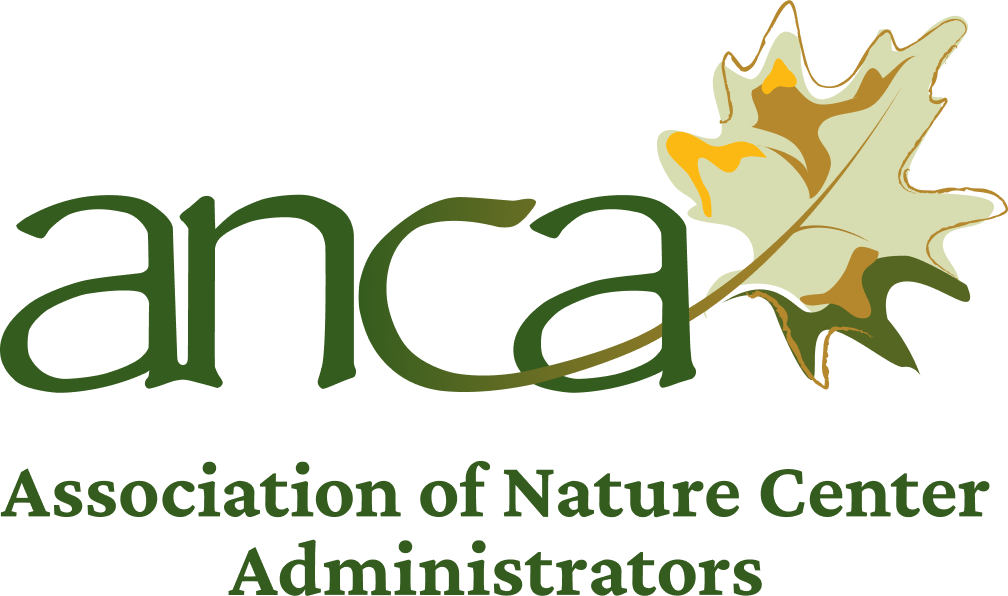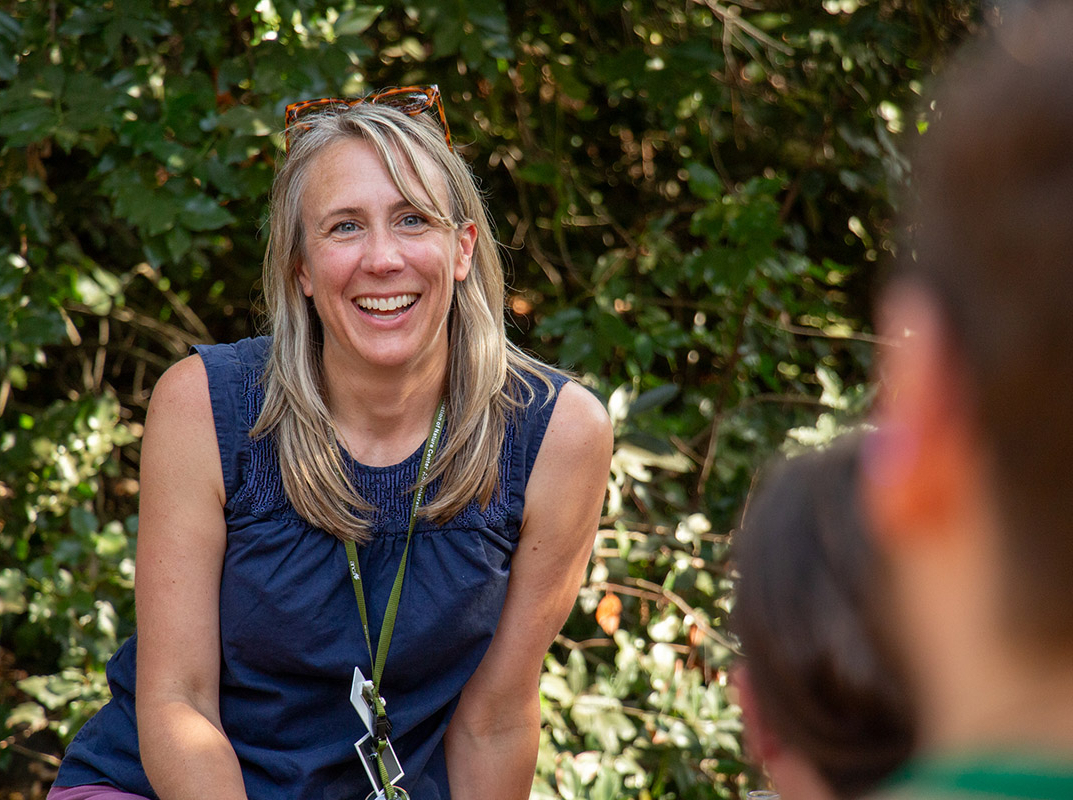by Peter Smerud, Executive Director, Wolf Ridge Environmental Learning Center
We all likely share this feeling as we see the transformational impact that experiences in nature have on human beings: the learning experiences we facilitate are a must-have for our young people, not merely a nice-to-have.
We no longer have the luxury of time. Our global issues require that we stop taking baby steps and begin leaping towards answers. We need to express the value for environmental education at the highest of levels. One might say, there is no greater expression of value than to establish that value as a law in our state or country. I’m proud to be a Minnesotan where that recently occurred.
WHAT IS OUTDOOR SCHOOL FOR ALL?
Outdoor Schools are a unique type of organization in the nature center field. They offer immersive and overnight programs that connect participants to nature and each other. These programs are youth-based and academic, focused primarily on public school partnerships where students and classroom teachers participate for multiple days, sharing educational activities and meals.
Outdoor School for All (OSFA) is a movement to support access to an outdoor school experience for every student. Currently four states have some form of OSFA: Oregon, Washington, Maine, and now Minnesota.
Learning from other states
This story begins in the throes of the pandemic when a group of national outdoor school leaders gathered weekly to commiserate, support each other, and search for creative ways for our organizations to survive the tragic consequences thrust upon us. Suddenly the outdoors had become the safe place to be, and that societal focus became a springboard for what became a dive into creation of outdoor school legislation in our states, even at a federal level. Months later ANCA joined the team and facilitated our group, where the staff and the board supported and helped coordinate action toward establishment of legislation that would manifest the values we all hold so dear.
We studied Oregon’s passing of Outdoor School For All (OSFA) in 2015, learning that approximately 29% of the youth in Oregon were enabled that experience before the law was created, and several years later over 80% of the kids annually experienced that coming of age in the outdoors. When Washington passed OSFA in 2021, we all watched in awe as funding flowed and the outdoor school industry took a huge leap forward.
By 2022, outdoor school leaders in Minnesota were lifted by the success in Washington and the historical achievements of Oregon. From previous advocacy work at the state Capitol I had learned, the hard way, there are many unwritten cultural norms and “rules” for lawmaking. Political advocacy to achieve passing of a law requires a coach, a skilled political strategist … a lobbyist. That strategist needs to become a partner that cares as much as you do, for like our students, lawmakers won’t begin to care until they know how much we care. The OSFA MN team hired the Solomon Strategies Group and the vision for OSFA in Minnesota was established.
Framing the legislation
Both Maine and Oregon are states where the University Extension oversees the OSFA program. In Minnesota, the purveyor of public lands to the people is the Department of Natural Resources (DNR), and the Commissioner of the DNR loved the idea of investing in the outdoor ethic development of our children. The DNR would be the holder of the OSFA grant program where the outdoor school providers would serve as grant recipients, funds awarded when they have a contract for outdoor school services with a school of Minnesota students. A government agency loves the simplicity of a small number of grant recipients that serve tens of thousands of students, and the grant recipients are already experienced with grant administration and accountability.
Outdoor “School” for Minnesota became the way to define quality and excellence in the experience. Qualifying providers need to provide an overnight experience away from home, a minimum of three days and two nights, and yet they must be accredited as a school. This would enable the DNR to hold a high standard of rigor in the facilitated learning structure, along with an academic and standards aligned curricula, and an education team whose credentials meet high expectations. This easily grew out of the existing model in Minnesota where all the providers were already accredited by Cognia as nonpublic K-12 and post-secondary schools, an accreditation accepted by the Minnesota Department of Education.
Initial legislative attempts
In the current political chaos of this country, I reflect more and more on the past few years in the Minnesota legislature. In this day and age, when do lawmakers, both Republican and Democrat agree, actually come together with a shared, almost equal value and voice regarding a piece of legislation?
The answer: when it is to ensure our future generations will maintain the outdoor ethic for which they are so proud in their state. And in 2023 a new champion had just been elected in the Minnesota House, Representative Kristi Pursell, a Democrat and an alumna of Wolf Ridge ELC’s naturalist training program, who taught for two years at Wolf Ridge ELC, then went to Oregon and Washington where she also served as an instructor in outdoor schools. But, a first-year Representative does not have a lot of influence — could she build the momentum needed? Could she pull together both sides of the political aisle?
Outdoor School is a great name that brings people together, both sides, and while perhaps different they each see outcomes that are valued and a hope for future generations. Little did we know how true those words would be.
Rep. Pursell introduced Minnesota’s first OSFA bill early in the 2023 legislative session and she passed that jacketed bill throughout the House, where to our amazement more and more authors signed on (Minnesota has no limit on the number of authors for a House bill. In the Senate the limit is five). Wolf Ridge ELC’s Senator, Grant Hauschild, also a recently elected Democrat, joined the team and chief authored a mirrored bill in the Senate. Within a couple weeks there were more than 20 House authors and a full five authors in the Senate. The author numbers were nearly equal Democrats and Republicans!
One of my most memorable moments was standing outside the halls of the House chambers when a rural Senator literally tugged on my sport coat and stated, “Pete, I just love the OSFA bill, all my kids have been to Eagle Bluff ELC for outdoor school. It was one the most influential experiences of their life. I’m so bummed I didn’t get to sign on as an author.”
Didn’t get to. That choice of words wasn’t lost on me. Ensuring an outdoor ethic is maintained for our future generations is not a partisan issue. This was Republican advocacy just as strongly expressed for the same legislation.
Two days later Senator Miller introduced a Republican-led OSFA bill in the Minnesota Senate, which quickly filled with co-authors. By the end of the 2023 session 70 authors had signed onto four bills, a Republican- and Democrat-introduced bill in each body. It was nearly equal, with just a couple more Democrats than Republicans. OSFA was the most bipartisan-authored legislation in the past 30 years of Minnesota lawmaking! Yet, there wasn’t enough time — the session ended and the bill never made it out of committee.
Refining the approach
Environmental education leaders make great lobbyists and political advocates. Team OSFA MN worked hard through the summer and fall of 2023, visiting with legislators, attending events, and awaiting the November election. By February of 2024 as the session opened we were back in the halls of the Capitol executing the plays put forth by our lobbyist coach.
That second year a champion was clearly rising, Senator Foung Hawj, a man of Hmong heritage who cared desperately for the equity move of this legislation — nothing screams equity more than “for all.” The 2024 session had nearly the same bipartisan author support, and the bill was passed in the committee chaired by Senator Hawj. OSFA moved into an Omnibus bill, and at 1:37am in the last days of the session it was tossed out. (The funding originally allotted for OSFA went to actions benefitting the Clean Water Act … if you’re going to lose to a cause, that’s a good cause).
A start to funding
In the 2025 spring session, legislation again originated from Republican and Democrat OSFA bills in the House and Senate, and among the total authors this time was a majority of Republican authors. Following a successful vote, on June 14, 2025, Governor Tim Walz signed the Outdoor School For All Act into Minnesota Law.
While early dreams and optimism strived to achieve funding at $29 Million, levels similar to what Washington or Oregon had achieved, Minnesota’s OSFA legislation passed with a meager $848,000 for the first year. But it passed, and the policy has now been established.
In Minnesota we are in some ways pleased at the smaller amount as we will be able to build upon it, creating cultural understanding and stability for the future. For comparison, in Washington challenges ensued from a massive leap into the legislation with millions allocated, then radical cuts occurred last year to their OSFA funding. In Oregon it was not near so dramatic but they are experiencing similar outcomes.
Minnesota’s DNR will put the program into action by early 2026 and the $848,000 will be quickly awarded very quickly to schools, in turn supporting several thousand more children to attend.
In three days I drive back to St. Paul to build relationships and help create new partners for the 2026 legislative session. With the policy established and no longer a debated subject, it’s now incumbent on us to demonstrate who is getting it and where the need remains in our stated value that all Minnesota young people are enabled by such an experience.
Currently 28% of Minnesota kids get the experience. A Twin Cities suburban House legislative district has 77% of their kids provided an outdoor school experience — but in 21 of 87 counties in Minnesota, no children go to outdoor school. I’m guessing you can envision the map we’ve prepared for our legislators.
Change for the future
People’s well-being is inextricably linked to the well-being of natural systems. We face increasingly complex challenges as a society. Outdoor school occurs at the intersection of economy, equity, environment, and education. The work we do equips people, communities, and lawmakers with knowledge, skills, and motivation to make informed decisions about how they address those challenges. Children need lived and learned experiences. They need to live in models, even if only for a week, for that week proves that what exists IS possible. The experience creates possibility for newly developed skills to interact responsibly and safeguard natural systems for future generations.
Our work is not about the planet, it’s about people; people reconciling their relationship with the natural world. Real and profound change requires us to raise our expectations dramatically higher, turning that experience into law is the future value statement that we need.
With tremendous respect for my fellow team members of OSFA MN, outstanding leaders of environmental education, thank you: Bryan Wood, Colleen Foehrenbacher, Dave McMillan, Lindsay Bjorklund and the team at Solomon Strategies Group led by Jim Erickson.
LESSONS LEARNED
- No matter what side of the political aisle your state may lean or even be dominated by, such legislation is possible in your state.
- This entire project can be conducted without a large grant or outside funding. The outdoor school provider organizations of MN enabled this through the time of their leadership teams and expenses (primarily lobbyists) were paid in equal parts by the organizations.
- The ultimate decisions in creation of a new law is really done by a small group of leaders … find those who chair or sit on the committees where your bill will be heard and facilitate that awareness-to-action continuum of learning. Get them to your facility.
- One lawmaker, as chair of a key committee, can take you great places.
- Lawmakers care deeply about what opportunities and support is provided to their constituents and communities. And they are competitive with what their neighboring districts or communities have or don’t have. A map of MN senate and house districts where a darker shade of green indicated the higher the percentage of students getting outdoor school became a game changer in the conversations, as they compared how many of their children were getting the experience to other districts around the state.
- Raise the tide and all boats float higher. In communities where the tradition is entrenched and a high percentage of their children go to outdoor school, nature centers, nature preschools and other EE programs thrive.
Advertisement


